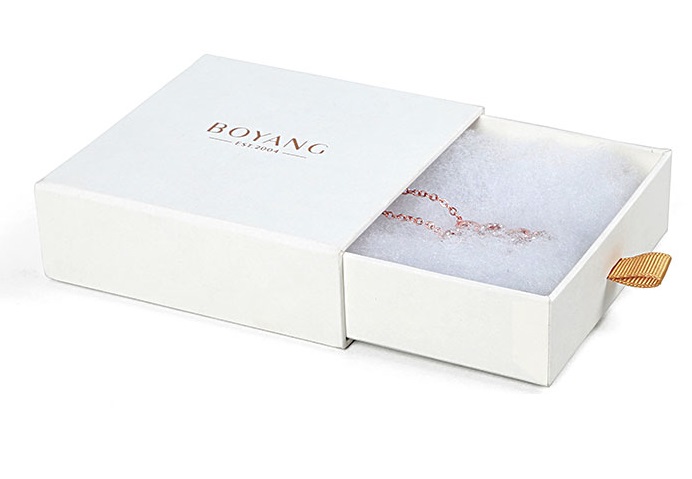You can share
- Share to Facebook
- Share to Google+
- Subscribe to our
- Share to Linkedin
- Share to Twitter

Embossing is a decoration technique commonly used in the jewelry packaging industry, including jewelry packaging boxes. It involves creating raised or three-dimensional designs or patterns on the surface of materials such as paper or cardboard. Embossing can add a touch of elegance, texture, and visual appeal to jewelry packaging, making it more attractive to customers. What is the embossing process for jewelry packaging boxes?
The process begins with selecting a design or pattern to be embossed onto the jewelry box. The design can be a brand logo, decorative pattern, text, or any other element you want to highlight.
Create a metal mold based on the chosen design. A die is essentially a raised engraved pattern used to create an embossed effect. It can be made using CNC machining or etching processes.

Cut the packaging material (usually high-quality cardboard or cardboard) into the desired shape and size of your jewelry box.
The mold is positioned precisely on the material to be embossed.
The mold and material are placed between two rollers of the embossing machine. One roller is usually heated and the other is not.
As the material passes through the rollers, pressure is exerted on the material. Heated rollers soften the fibers of the paper or cardboard, allowing the mold to create raised indentations on the surface. This creates a three-dimensional relief design.
The pressure, temperature, and duration of the embossing process are carefully controlled to achieve the desired depth and definition of the embossed pattern.
After embossing, the material can be passed through a cooling station to help set the embossing pattern.
Once the material has cooled and the design is determined, it can be further processed, such as cut, folded, or assembled into the final jewelry box.
Embossed jewelry packaging boxes can have additional touches such as printing, foil stamping, or other decorative elements added to enhance their appearance.
Embossing can be done in a variety of styles, including blind embossing (a raised design with no additional color or texture), foil embossing (a metallic foil is applied after embossing for a shiny effect), and more. The specific method used may depend on the desired aesthetics and the capabilities of the packaging manufacturer. It's important to work with an experienced professional or a printing company that specializes in embossing so that you get high-quality results for your jewelry packaging.